After trekking in sahyadris for so long people ask me Niraj why mountains excite you so much? I have seen clouds dance , seen double rainbows & circular rainbows – indravajra , seen peacocks dance beside me, have seen waterfalls in dry lands on a hot summer day but I am still surprised every now & then. One such surprise is a huge reverse waterfall at Naneghat. Naneghat is an ancient 2000 years old trade route from Konkan to Junnar. Lying on the boundary of the Deccan Plateau, the powerful winds from Konkan cause the waterfall to reconsider its descent and rise back to the sky, creating a spectacular reverse waterfall. This blog will guide you to plan the Naneghat reverse waterfall trek yourself. Similar adventures like this one at the end of the blog
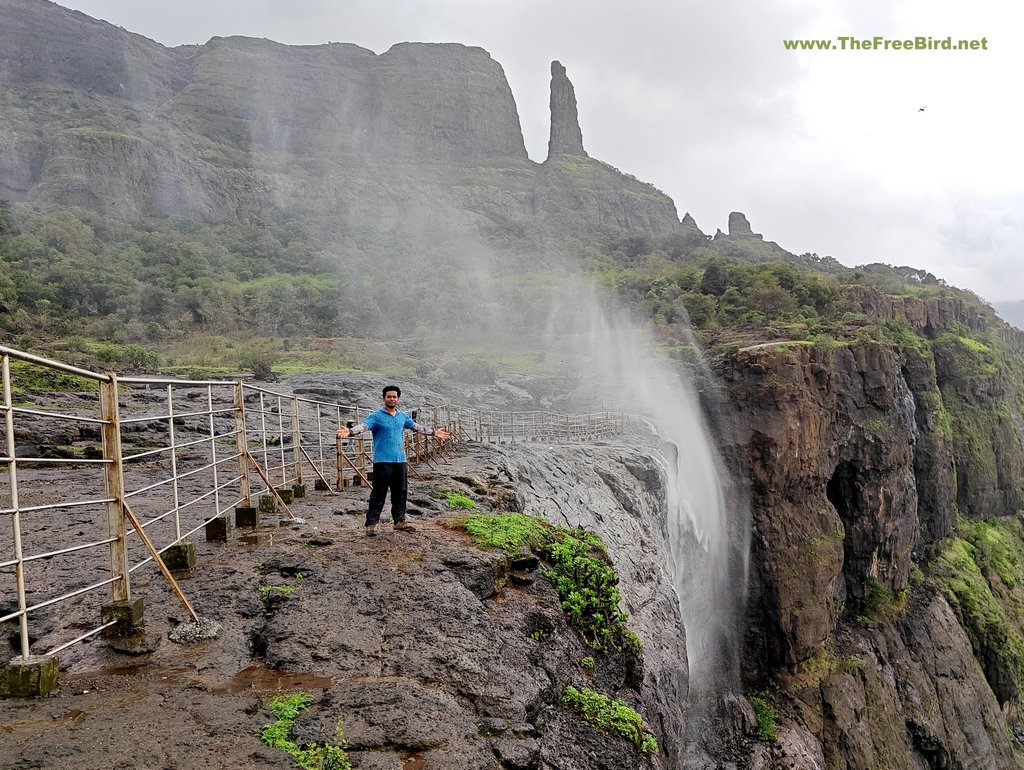
Is Naneghat Trek difficult for beginners ?
Niraj, how difficult is Naneghat trek for beginners? Naneghat reverse waterfall trek is an easy trek but quite lengthy from Konkan/Mumbai side with about 8kms one side distance. However as you will read later on there is also a direct road from Pune side which makes it a direct drive for them. But if you trek the distance you will experience a historic trade route & that will make the reverse waterfall much more appealing. How much time does it take to complete Naneghat trek ? From Mumbai side it will take about 3 hours to reach the top which can be directly reached by road from Pune side.
What is the best time for Naneghat reverse waterfall trek ?
If you are only planning to see the reverse waterfall you must plan Naneghat trek only in monsoon. Added advantage being the trail has stone stairs which has water cascading over them making for a very soothing experience. If you just want to enjoy the Naneghat trade route, winter & summer are good enough if you start the trek early as the forest climb is devoid of any wind and feels very hot & exhausting. Monsoon between July-Sept feels to be the best time.
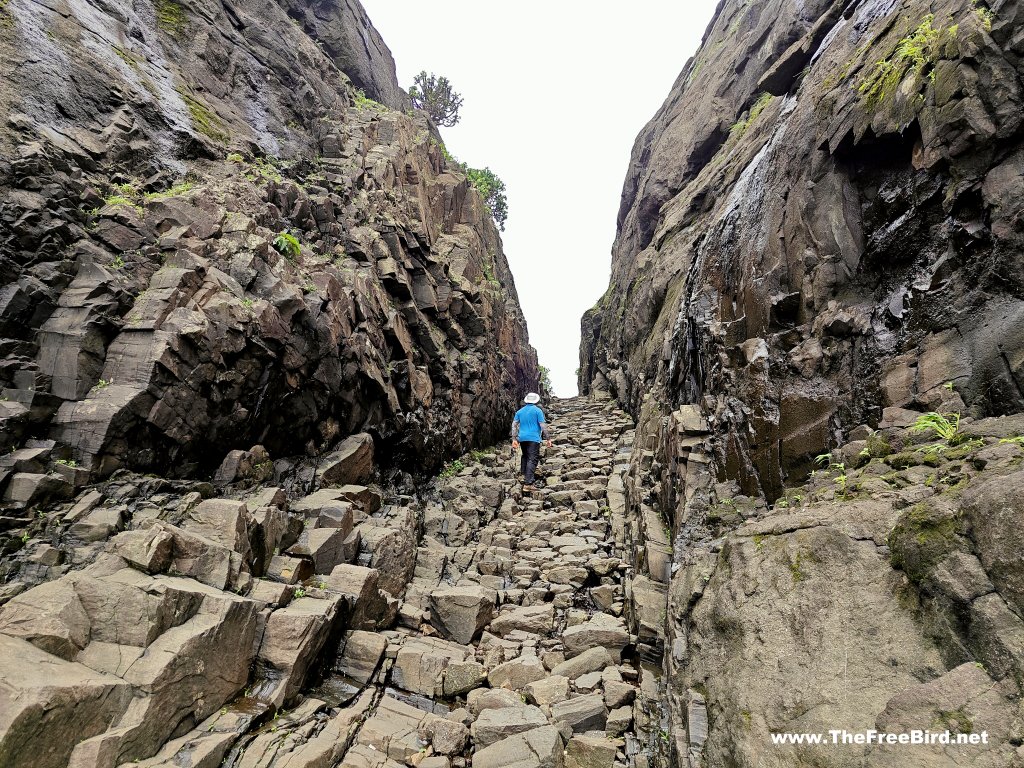
Naneghat History
Naneghat was an ancient trading route connecting the old sea ports of Sopara , Kalyan & Thana to the economic hubs in Junnar. It was build during the Satavahana’s period 200 BCE–190 CE some 2000 years ago. As Kalyan continued to be a trading hub & Junnar was the capital of many dynasties like Satavahana, Chalukya, Shilahar etc the trade route flourished. To protect this route forts like Jivdhan, Nimgiri (Hanumantgad), Hadsar , Chawand & Shivneri were build around it. The trade route also has what can be called as the oldest toll booth with the presence of a coin collecting pot (Ranjan) at the the top of Naneghat . This might have given the place its name as “Nane” means coin & “ghat ” means pass . Similar pots were found near Vaisakhare village which was the starting part of this trade route. The cave present at the top was build during Satavahana’s reign . The cave had 8 idols of prominent members of Satavahana dynasty , but these were destroyed in course of time. Cave also has Brahmi & Devanagari inscriptions etched in the walls describing the yadnya (rituals) & donations given by the queen Naganika.
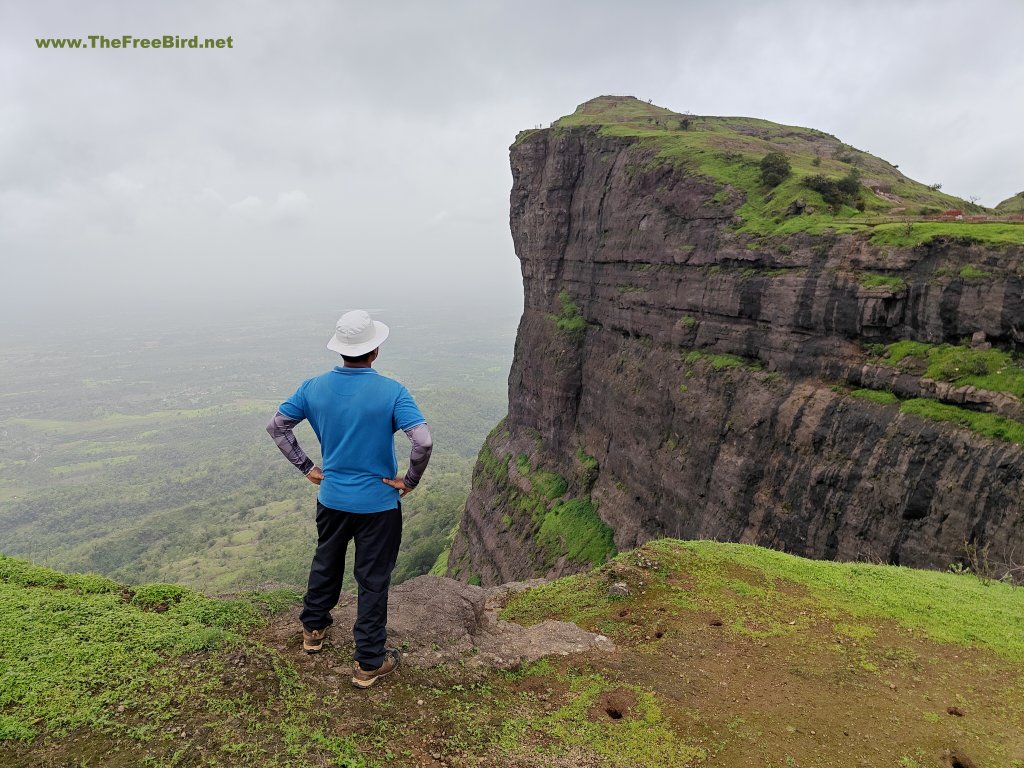
Where can we stay for Naneghat trek ?
Naneghat is usually done as a one day trek, however if you plan to do the nearby Jivdhan fort on top of the Naneghat plateau you can stay at the top where many homestays have cropped up owing to the popularity of the reverse waterfall. Food is available at the starting point of the trek and directly available once you reach the top of Naneghat. There are some makeshift food stalls on the trekking route which crop up on monsoon weekends.
How to reach Naneghat from Mumbai & Pune?
Where is Naneghat located ? As you may have read earlier Naneghat is a mountain pass connecting Junnar & kalyan. It lies near Junnar in Pune district and is about 120 kms from Pune city & 165 kms from Mumbai with Kalyan being the nearest big railway station.
From Mumbai: Vaishakhare is the base village which is 90kms from Kalyan and slightly away from the highway. Instead of going from Vaishakhare and walking a little bit extra to reach Naneghat trek start point one can a board a Malshej ghat bus & drop directly at the starting point which is about 5kms from Tokawade village ( allocated bus stop) . To reach here, first reach Kalyan railway station & move to the bus station near by & take any bus going towards Alephata via Malshej ghat. Ask them to drop at this start point or if they dont agree get down at Tokawade and take a sharing vehicle to reach the start point. If you have personal vehicle drive directly by searching Naneghat trek starting point on google maps.
From Pune: If you want to do Naneghat as a trek you can take any bus from Pune to Alephata & then take another bus going to Kalyan via Malshej ghat and get down at Tokawade village ( ask them to drop you at the start point which is 5kms before the village). For lazy people you can directly drive to the top of Naneghat by just adding the location to your google maps or if you want to use public transport use any bus to reach Junnar and take another bus to Ghatghar village which drops you near Naneghat.
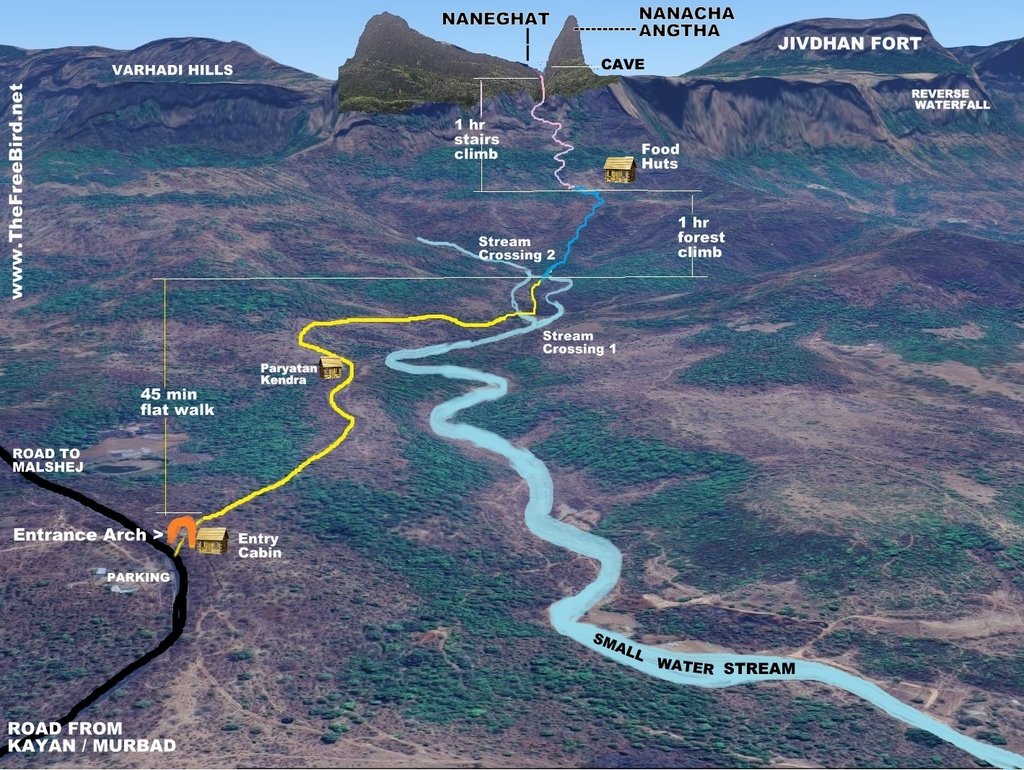
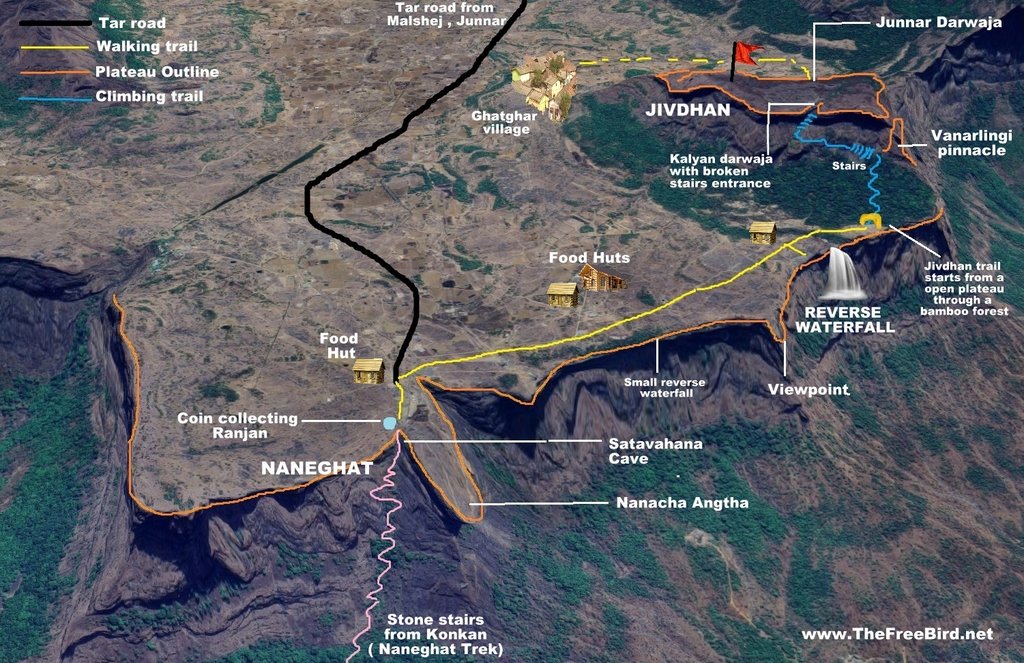
Naneghat reverse waterfall trek blog: TheFreeBird’s story
I added Naneghat trek starting point on maps and drove to the start till I could see the entry arch on the right side of the Malshej road. Parking my bike I quickly started my ascend expecting heavy rainfall to enjoy the waterfall cascading on the stone stairs of Naneghat. But it turned out to be quite a hot & dry day as I slowly climbed to the top. Glad I had carried lots of water & happy to have not paid entry fees as the entrance cabin is operational only on weekends.
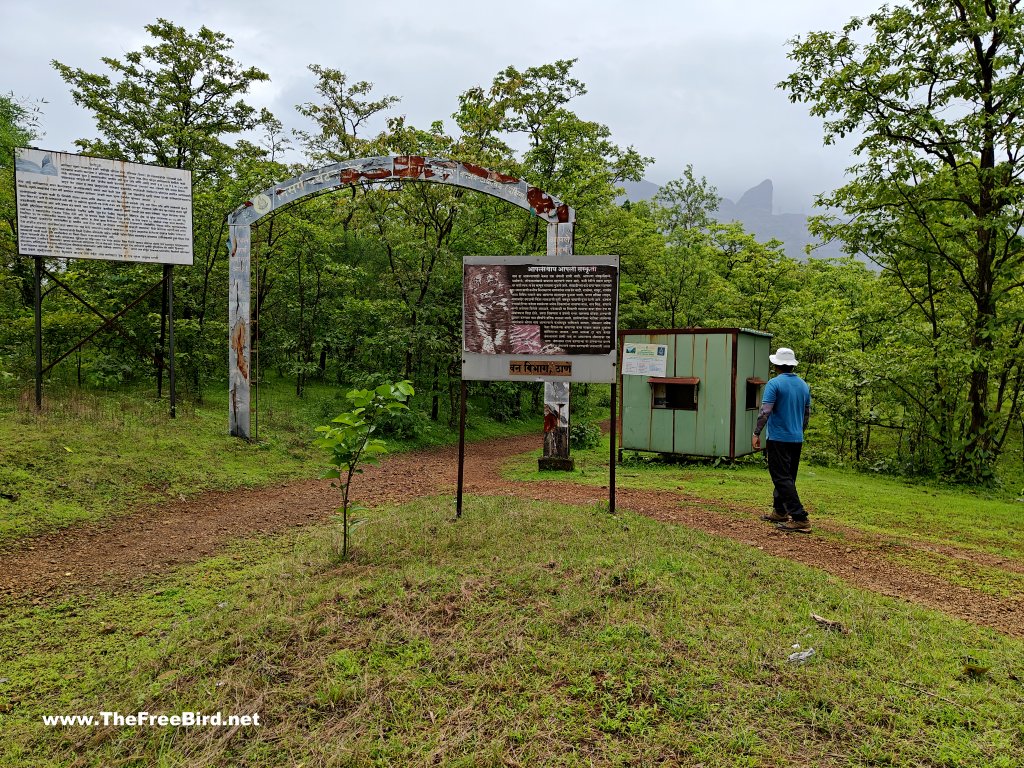
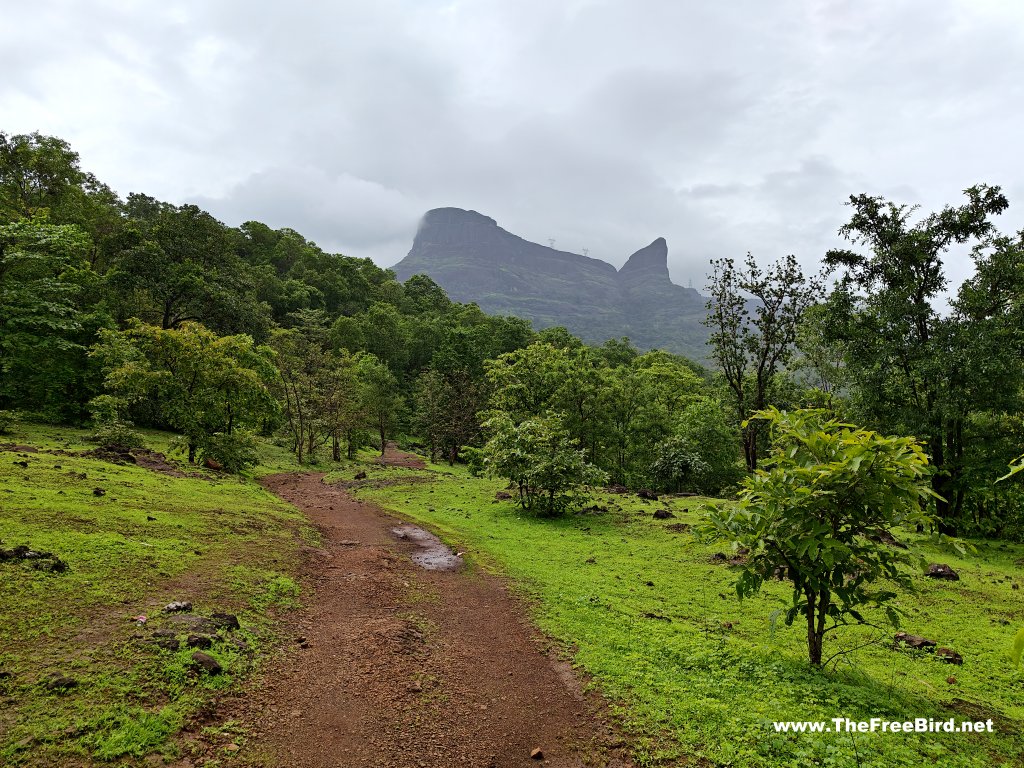
Naneghat reverse waterfall trek is divided in 3 parts with the first one being flat walk for 30-45 minutes till we reach the second water stream. From then onwards the forest climb begins which takes another hour to reach the stone stairs which take another hour for the final push till the top. I quickly reached the stream crossing which was almost dry due to lack of rain but a small dam on it had crystal clear water.
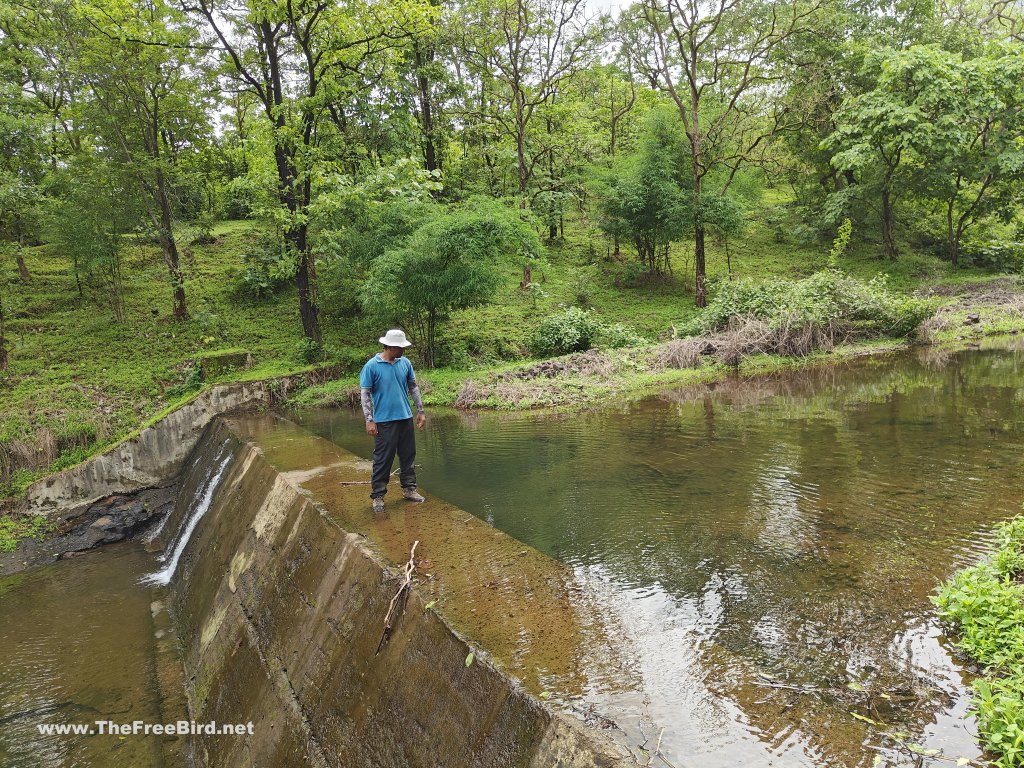
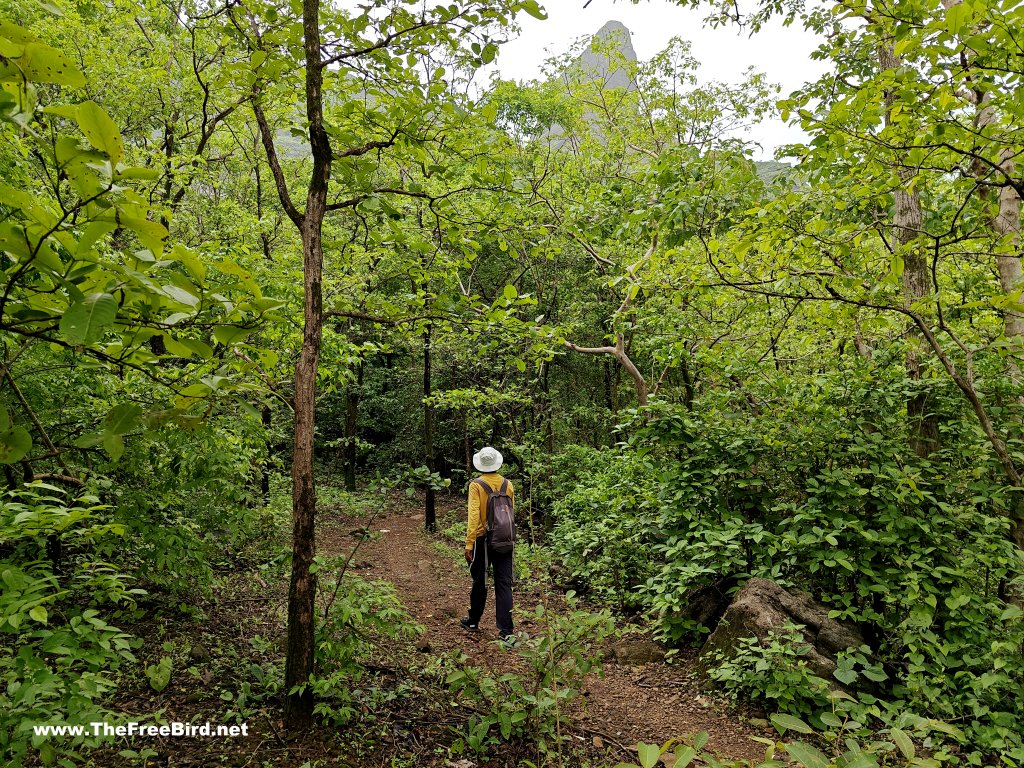
There are lots of mosquitos in the forest climb after the streams which meant additional motivation to quickly cross the forest. Its better to be properly clothed to prevent such mosquito bites ( my trek gear ). Mosquitos helped us to climb faster as we brisked the climb to reach the plateau. Entire Naneghat is clearly visible from here & this plateau also has some weekend food huts.
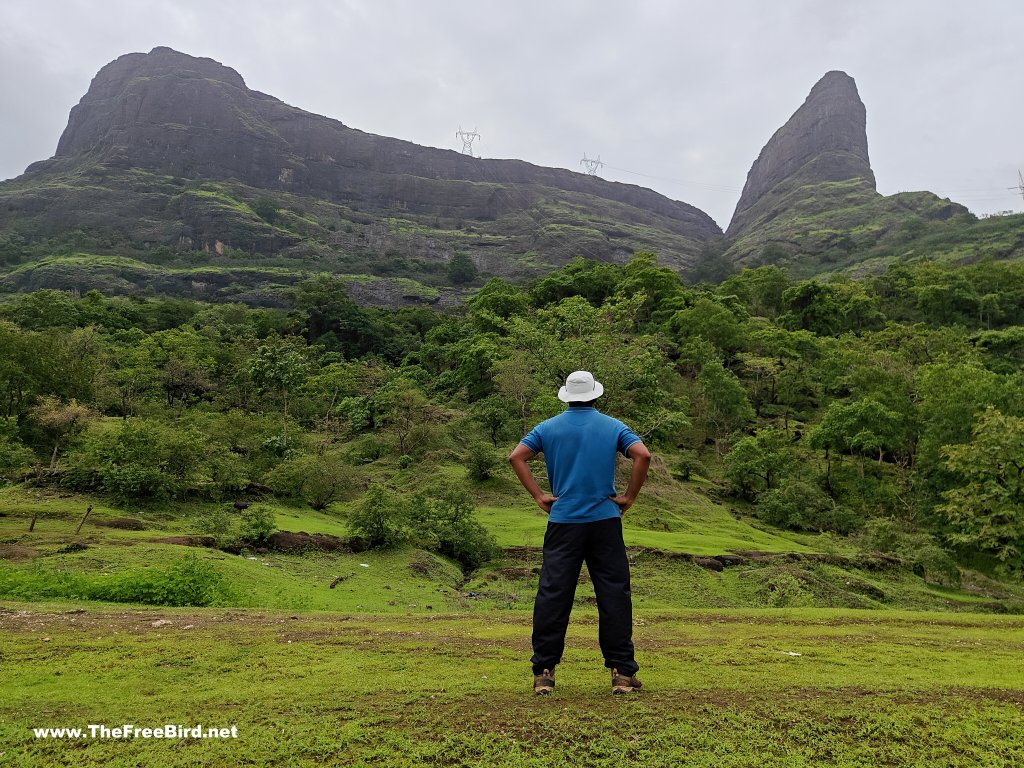
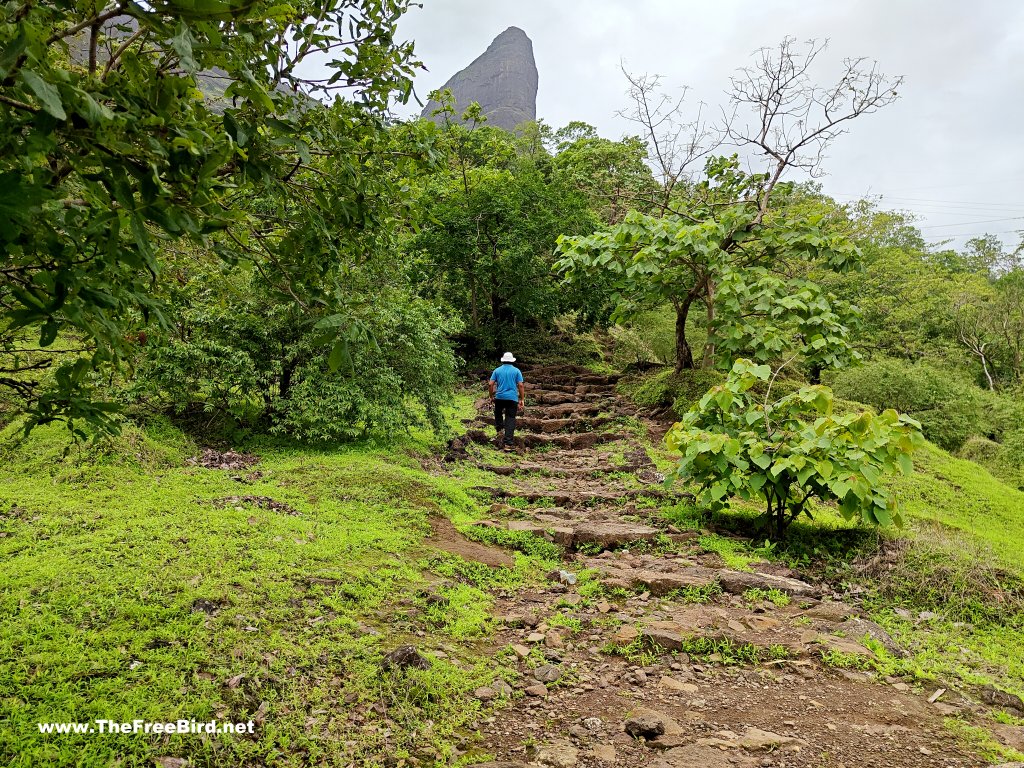
The stone stairs begin from this plateau which then pass through a dense forest to reach the top. During rainy season all the stairs till top are covered with water cascades which I planned to enjoy. Unfortunately it didnt rain at all that day leading to dry & boring climb. Within about 2.5hrs from start we managed to reach the top where we forgot all the efforts as the soothing wind cooled us down.
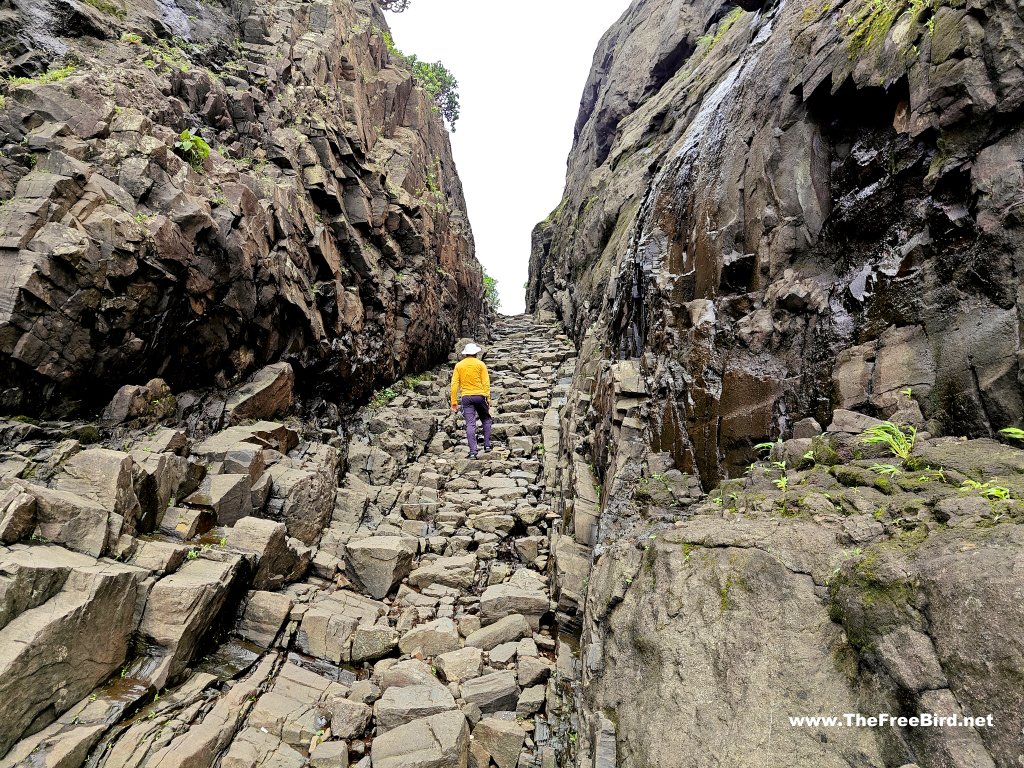
Imagine using just hammer & chisel to cut through an entire mountain 2000 year ago. Imagine the human grit & tenacity to literally move mountains. When you have a strong will, nothing can come between your dreams. All you need to do is to believe in yourself & take the first step , fate shows the way. The entire area was upgraded during the Satavahana reign. The cave inscriptions highlight the changes, rituals & donations performed in the region by the dynasty. The inscriptions in Brahmi script are very old and the Devanagari type script inscriptions appear to have been carved later on.
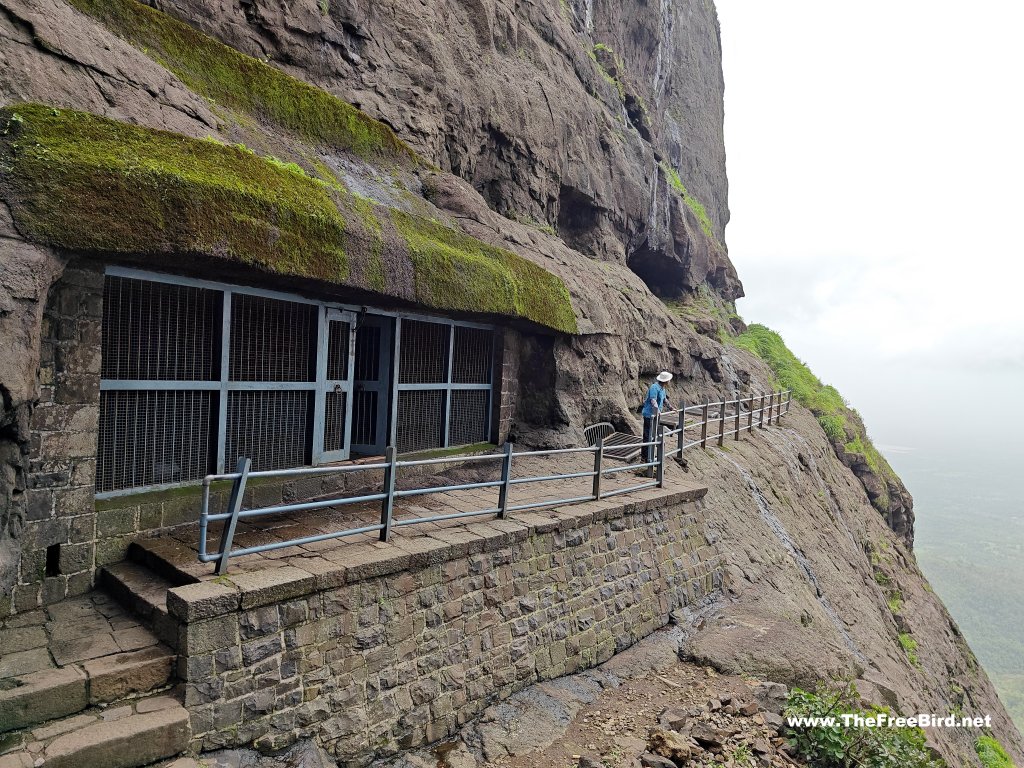
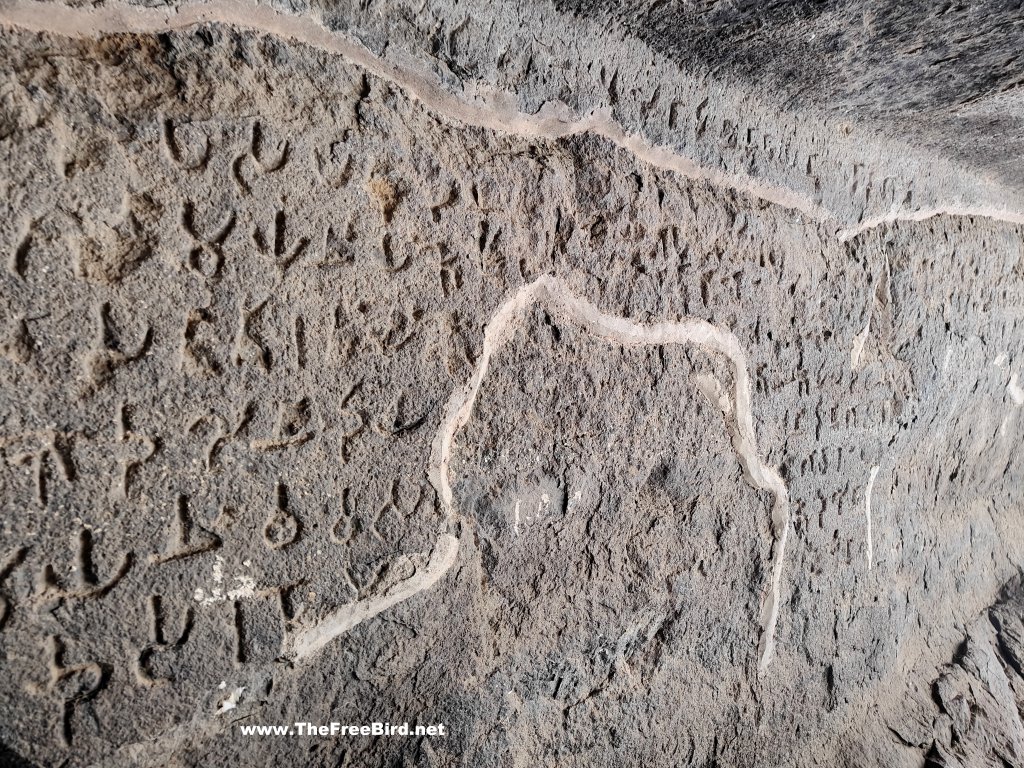
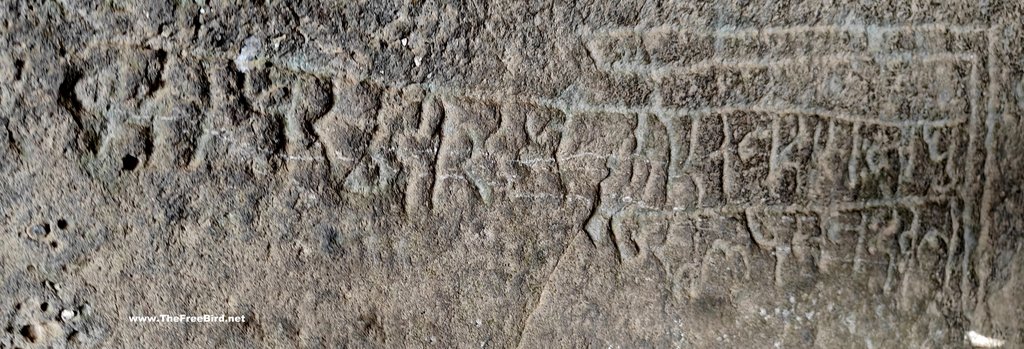
The Brahmi script is used for Prakrit language messages on the walls of the cave depicting the glory of Satavahana dynasty. This brahmi script is tightly linked with the origin of the present day script for Sanskrit, Hindia , Marathi & Konkani. These messages are a sneek peek into the glorious past of the region and should be conserved. Two spots were chosen for this cave to be build- work on the first spot was started and later abandoned in favour of the existing location because of the better view the area provides. This unfinished cave lies a bit higher at the Naneghat entrance Junnar side
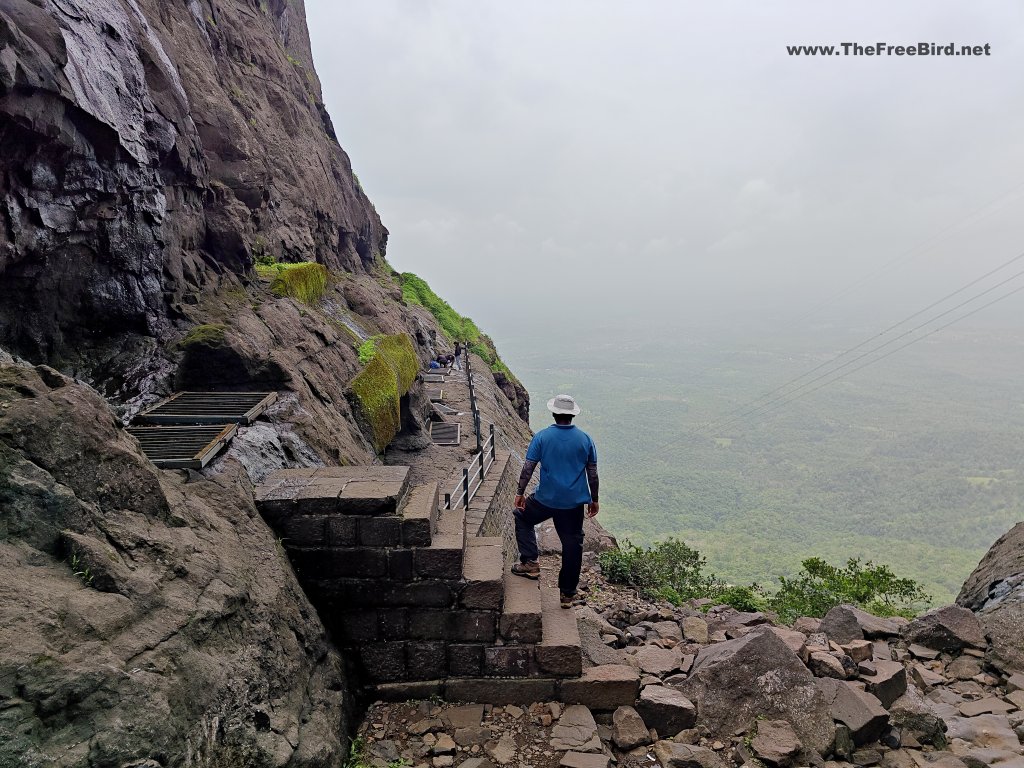
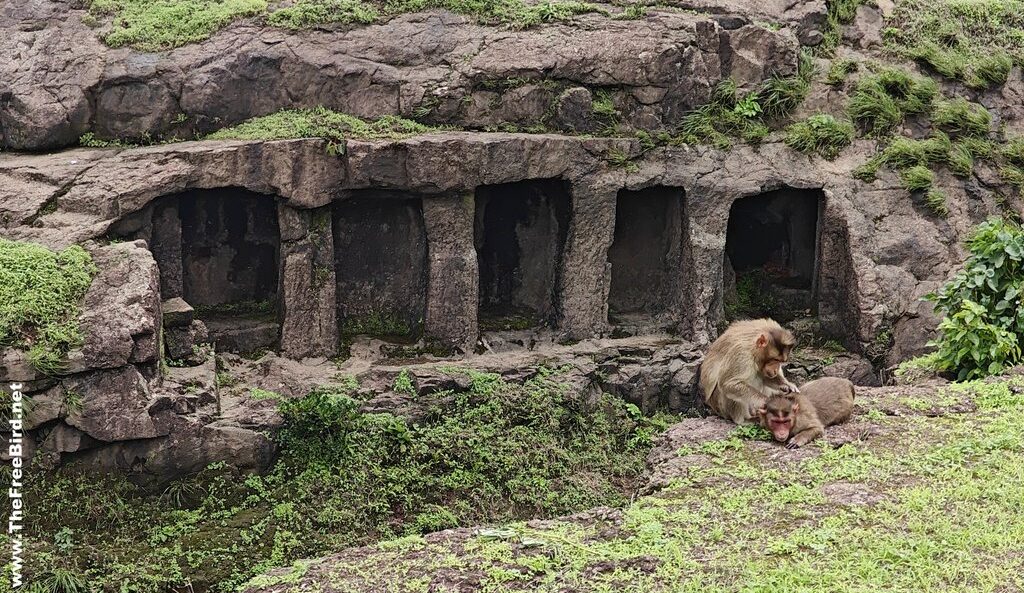
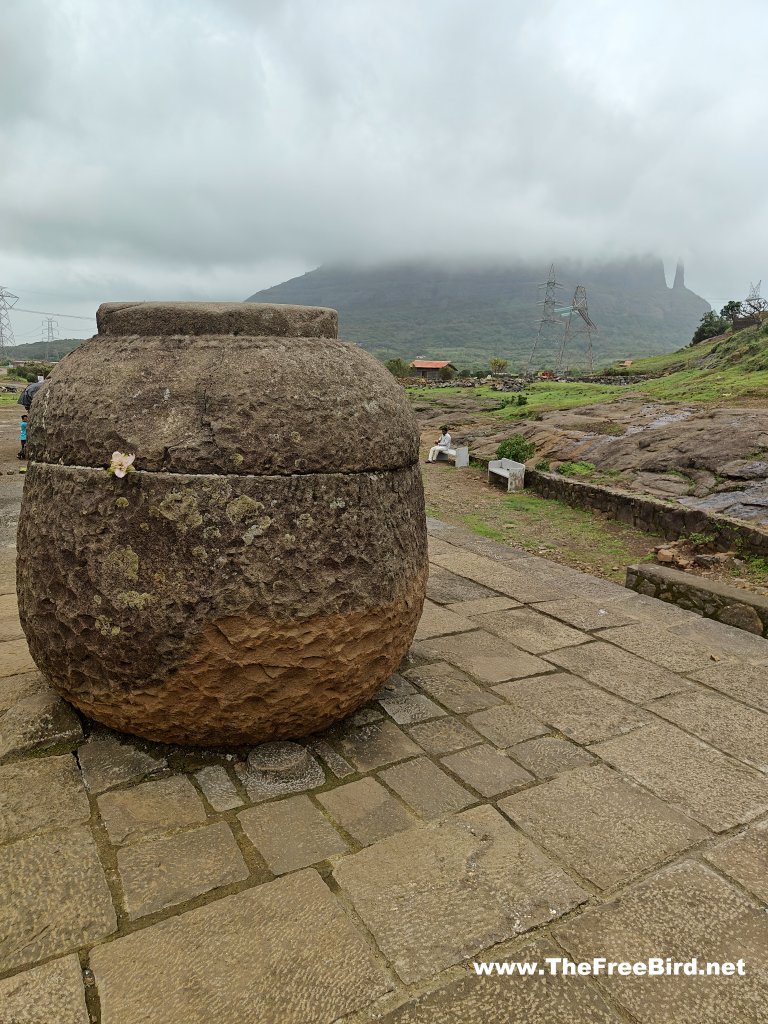
As we crossed Naneghat we see a coin colleting pot ( ranjan ). This is one of the oldest toll booths in India. Similar ranjan are also seen at Vaishakhare village – start of the ancient trade route. This 5ft pot is the reason for the name Naneghat = “Nane” means coin & “ghat” means pass
Once Naneghat was explored , next on my list was Nanacha Angtha which looks like a thumb from far away and has such a unique structure with a protruded top. Plan was to go to its top to see the Konkan area but clouds immediately blocked the view. The new houses being build definitely reminds me of the Welcome movie scene.
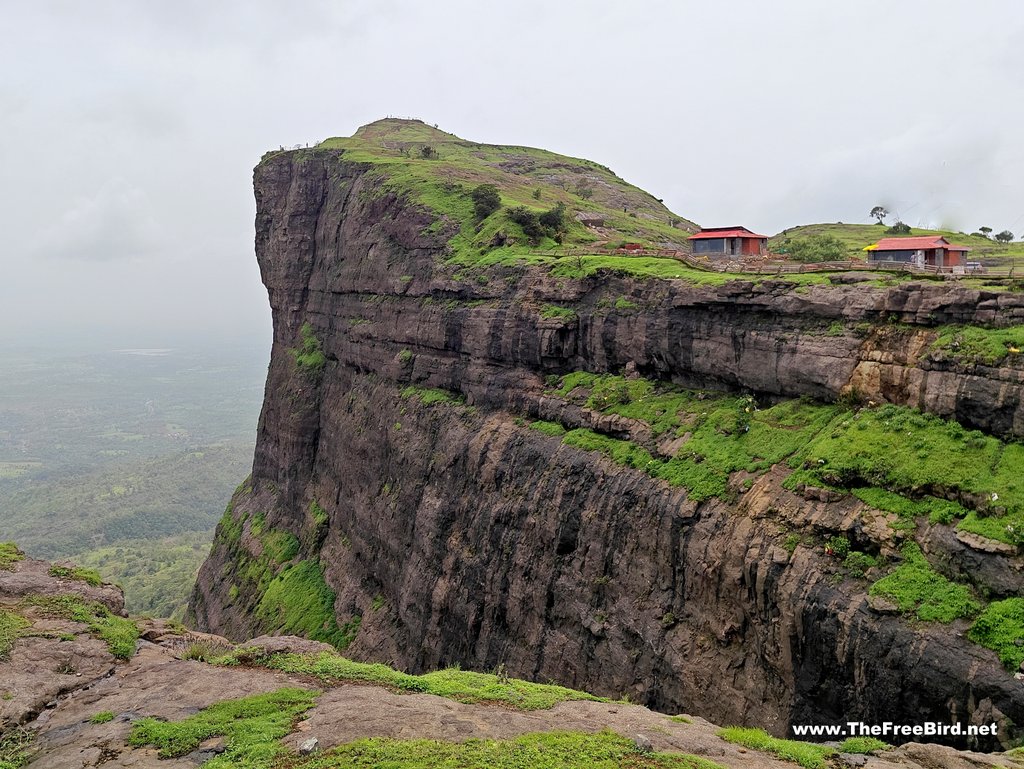
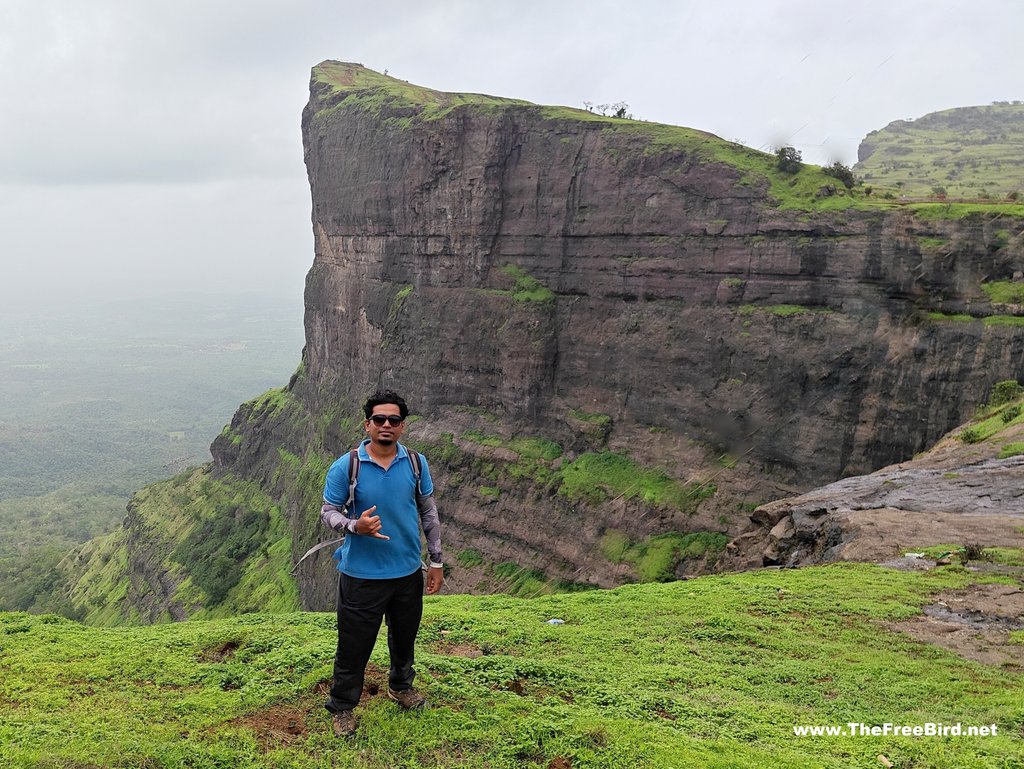
It had been more than 3 hours since we started and we were yet to experience the viral & famous Naneghat reverse waterfall. From Nanacha angtha its about 15min flat walk over the Naneghat plateau. As I walked towards the waterfall , we were also reaching near Jivdhan fort which is just beside the waterfall and was next on my to do list that day. There are many trails on the plateau but you can either walk towards the Vanarlingi pinnacle of Jivdhan fort or walk near the edge of the plateau to reach the Naneghat reverse waterfall.
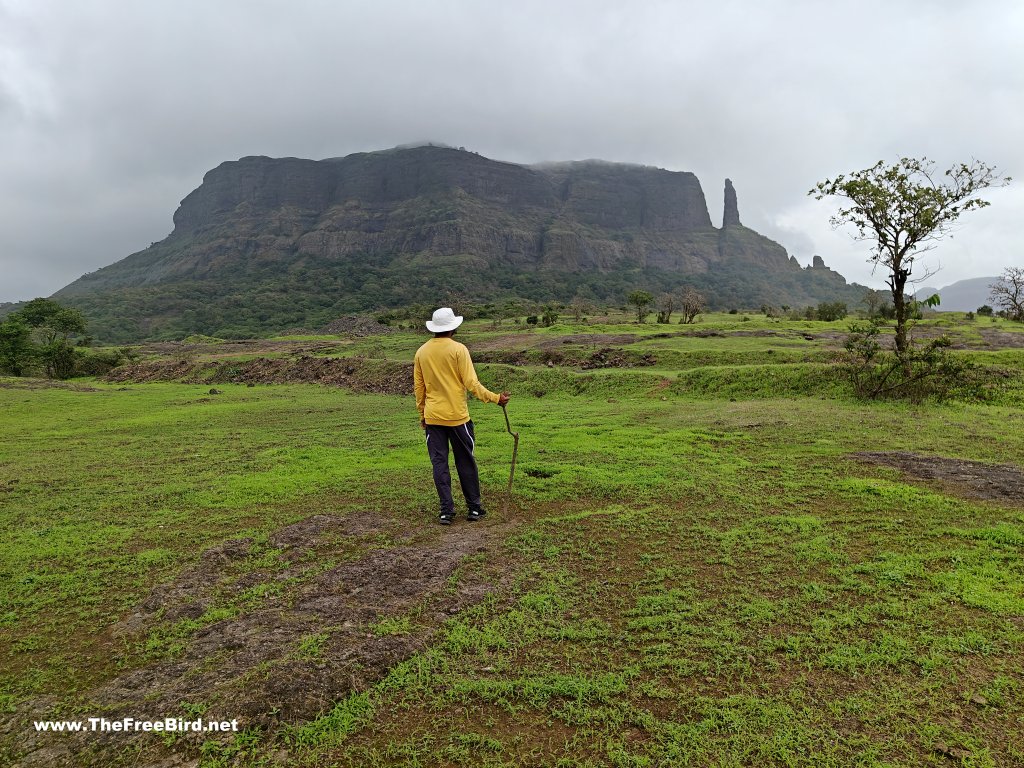
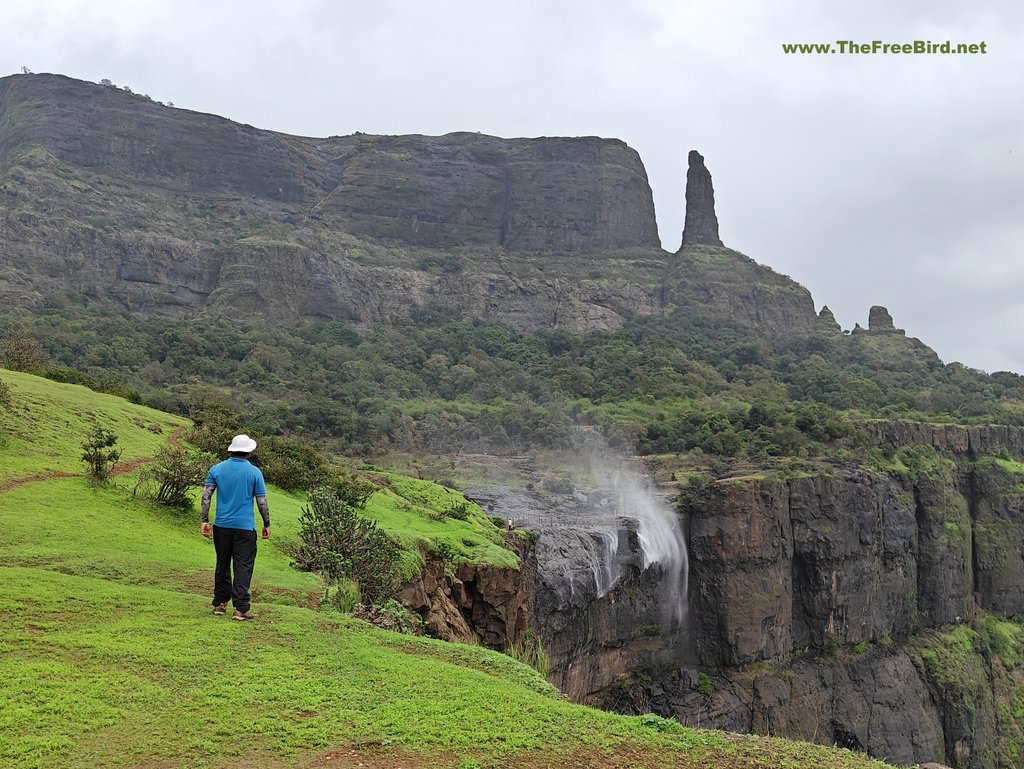
As we walked by the edge of the plateau towards the Naneghat reverse waterfall , we find many smaller waterfalls. It would suddenly start raining on us & then we would notice the reverse waterfalls. If we look at it properly some water droplets would fly to the sky while some just stayed floating at one particular point. Even the smaller reverse waterfalls felt magical & I could only imagine the strength of the bigger one.
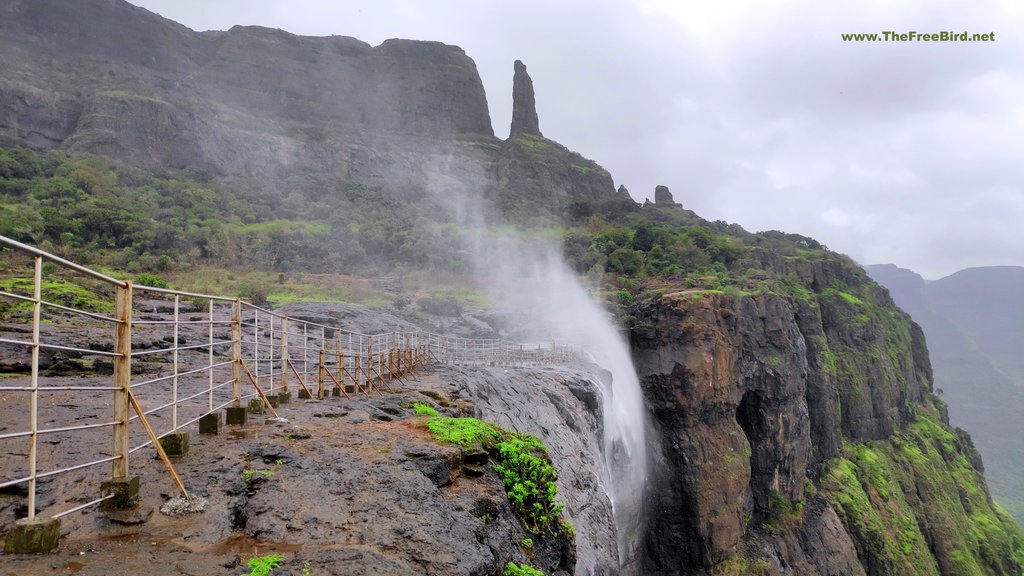
Streams of water poured down the waterfall and the Konkan wind would push it to the top. The fight between the water & wind continues as the waterfall dances to its tune. Once the wind gets the upper hand the waterfall reverses to the sky, but the fight continues with the water trying to enjoy gravity again. Many water droplets are stuck in equilibrium and appear to magically float steadily. Such pearls of droplets shine perfectly in the sunlight creating a dramatic view. Though I had no spare clothes I found myself being pulled me towards it.
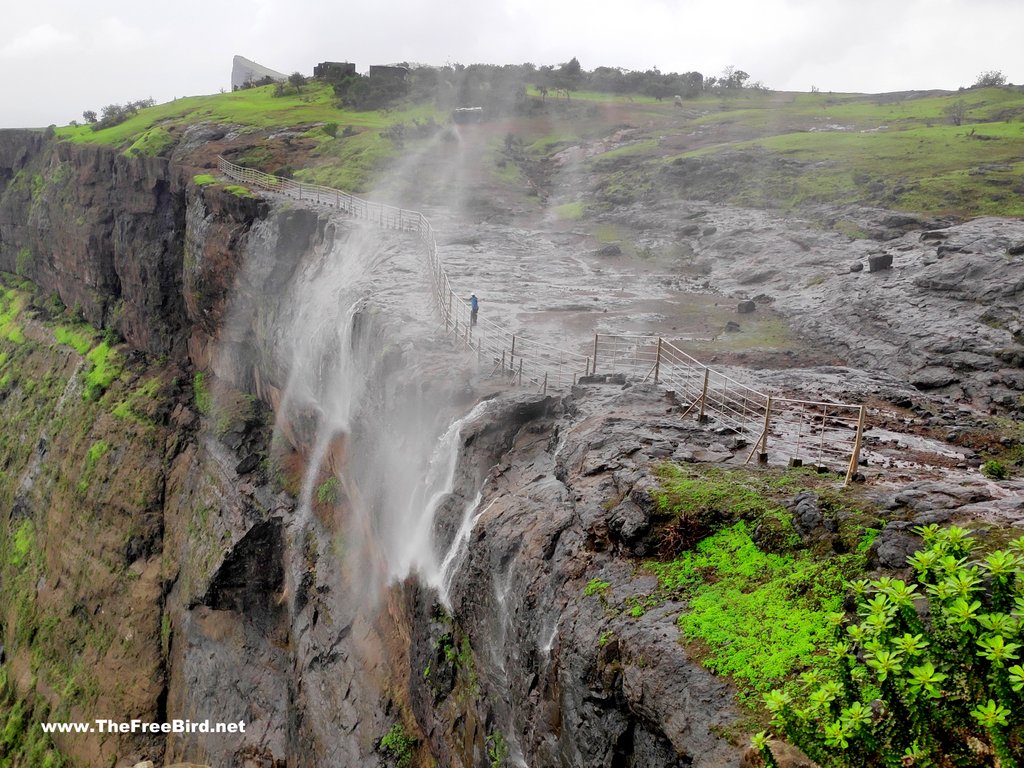
I have been to many waterfalls but this reverse waterfall is the only one which can be term the safest one as there are zero chances of rock fall. The shower felt so pleasant. I was completely wet within seconds & forgot all the efforts we had put since morning. If it were not for the Jivdhan trek , I would have stayed here for a long time. All the tiredness trekking 10kms since morning had gone and I headed towards Jivdhan fort in wet clothes.
Bye !!
That’s it for the Naneghat reverse waterfall trek blog.
If you have any doubts add a comment at the end of this post or reach out to me on my social media channels(at the end of this page). I also create ambience sahyadri videos on youtube.

TREKS NEAR MUMBAI & PUNE
expand for individual treks +
Waterfalls
Easy treks near mumbai- pune
Easy treks near Lonavala
Treks near kasara & nashik
Treks near Malshej
Konkan sea forts
Difficult treks
Offbeat
Matheran trekking routes from:
If you have been trekking in sahyadris for a long time , upgrade your skills to climb Himalayas by training for mountaineering which includes rock climbing, ice climbing and all adrenaline pumping adventures we love. Here is a short intro for moving from trekking to mountaineering
SOULFUL TRAVELS
 TheFreeBird
TheFreeBird

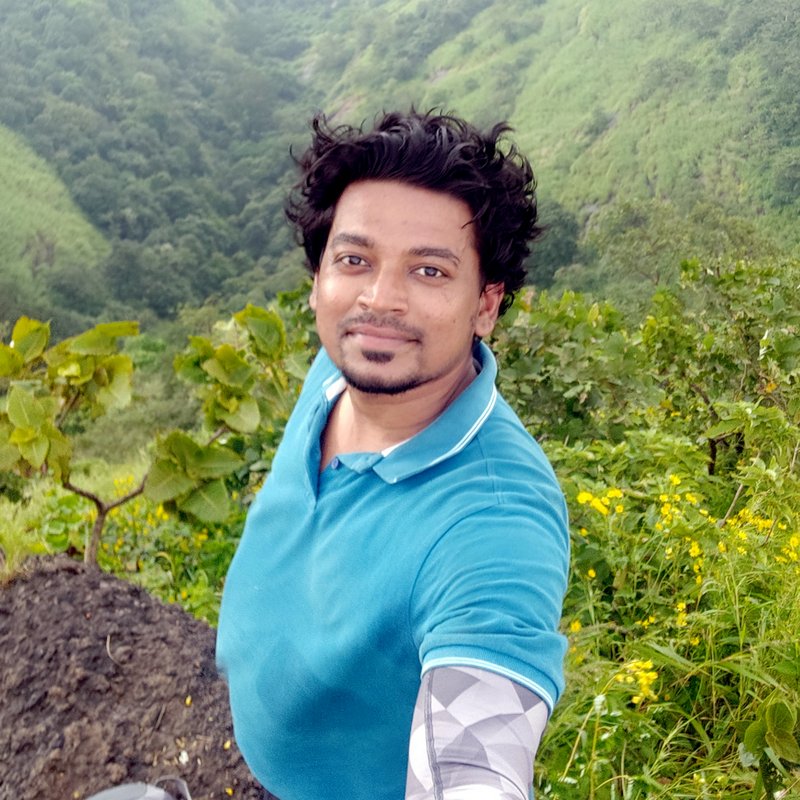
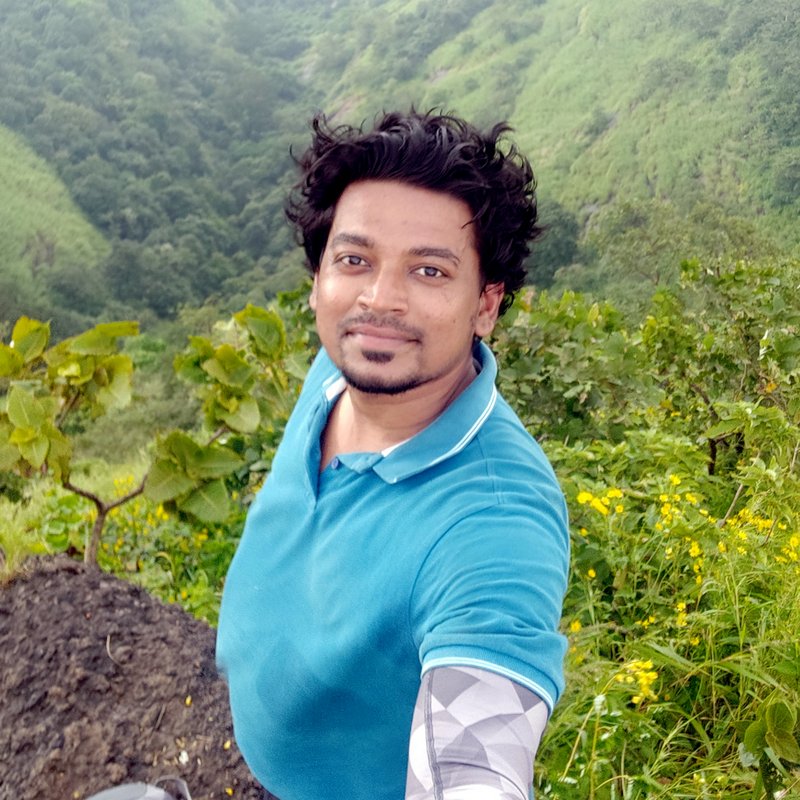

It was a great experience….and likewise this article of yours which presents that journey in front of all eyes…